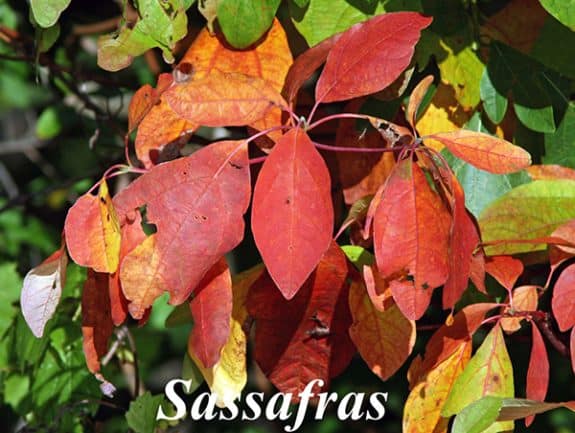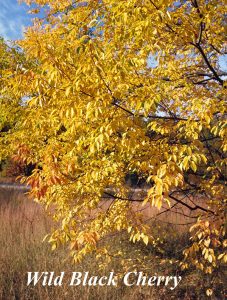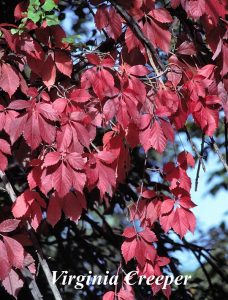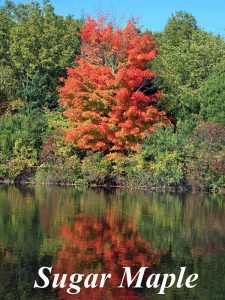
Story and photos by Tom Hodgson
Many of us who have lived our lives in the Midwest, or the New England area may take the fall color season for granted.
On the contrary, our experience is unique.
Only a few places in the world have the right mix of climate and plant species that can create the brilliant fall color displays we are so used to. In Michigan, there are more than 100 species of trees and shrubs that turn color in the fall.
 Fall color changes are a part of the process that prepares deciduous trees for winter. Thanks to a plant pigment called chlorophyll, from the time the leaves unfurl in spring until the end of the summer, the predominant color of our landscape is green.
Fall color changes are a part of the process that prepares deciduous trees for winter. Thanks to a plant pigment called chlorophyll, from the time the leaves unfurl in spring until the end of the summer, the predominant color of our landscape is green.
During the summer, the green pigment is so intense it masks the yellow and orange pigment also found in the leaves. Chlorophyll is vital to plants, as it has the unique capability of transforming the light energy of the sun into chemical energy to produce sugar from water and carbon dioxide in a process called photosynthesis.
 The manufacture of chlorophyll requires the long days and intense light of summer. Chlorophyll decomposes in the dark, so in autumn as the days become shorter and the nights become longer, leaves begin to lose chlorophyll. The green fades, allowing the yellows and oranges to show through. In our area, the leaves of silver maple, elm, aspen, basswood, willow and cottonwoods turn yellow, while hickories and some maples turn orange.
The manufacture of chlorophyll requires the long days and intense light of summer. Chlorophyll decomposes in the dark, so in autumn as the days become shorter and the nights become longer, leaves begin to lose chlorophyll. The green fades, allowing the yellows and oranges to show through. In our area, the leaves of silver maple, elm, aspen, basswood, willow and cottonwoods turn yellow, while hickories and some maples turn orange.
The development of red pigment depends on an increasing sugar concentration in the leaves at the end of the season. Night temperatures dipping to the 40’s and 50’s signal trees that winter is approaching. To protect themselves from the drying effects of winter, the trees form a corky abscission layer that plugs up the connecting vessels between the twig and the leaf. These vessels normally allow free movement of sugar, water and nutrients between the leaves and the rest of the tree.
 Sugar continues to be made in the leaves by the last remaining chlorophyll. Because the abscission layer traps it, sugar builds up inside the leaves and is converted to red pigment. Some plants noted for their red colors are red and sugar maple, sumac, black gum, sassafras, flowering dogwood, and Virginia creeper. The purplish tone of white ash and the Crimson King variety of Norway maple results from the mixing of red and green pigments. If the fall season is cloudy and rainy, the red pigments fail to develop. There is also noticeably less red in the leaves on the north side of a tree, or in the same species growing in a shaded condition.
Sugar continues to be made in the leaves by the last remaining chlorophyll. Because the abscission layer traps it, sugar builds up inside the leaves and is converted to red pigment. Some plants noted for their red colors are red and sugar maple, sumac, black gum, sassafras, flowering dogwood, and Virginia creeper. The purplish tone of white ash and the Crimson King variety of Norway maple results from the mixing of red and green pigments. If the fall season is cloudy and rainy, the red pigments fail to develop. There is also noticeably less red in the leaves on the north side of a tree, or in the same species growing in a shaded condition.
In nature, soon after the leaves fall, they are attacked by the F.B.I. (fungi, bacteria and invertebrates), decompose and release their nutrients back into the soil to be used again.
 This can be dramatically illustrated if you go into the woods, and look for old leaves. Ones from the current year are easy to find and may still have some color. You may also find the remains of a few leaves from last year. Most of the leaves from two years ago have been completely decomposed. Leaves of maples and aspens decompose very quickly, while those from oaks contain higher levels of tannic acid and take longer.
This can be dramatically illustrated if you go into the woods, and look for old leaves. Ones from the current year are easy to find and may still have some color. You may also find the remains of a few leaves from last year. Most of the leaves from two years ago have been completely decomposed. Leaves of maples and aspens decompose very quickly, while those from oaks contain higher levels of tannic acid and take longer.
Fall is a progression of color. In late September, the early color from Virginia creeper, the sumacs and shrubby dogwoods is on display.
Next the maples begin to turn, followed by the aspen and hickories. Local colors are usually at their peak on or about the third week in October.
 The coloring of the oaks tells us we are nearing the end, and the smokey gold of tamarack is the season’s last hurrah. With that, the leaf peeping season becomes the leaf raking season. For the next five months, we must endure leafless trees, short cloudy days, cold and snow.
The coloring of the oaks tells us we are nearing the end, and the smokey gold of tamarack is the season’s last hurrah. With that, the leaf peeping season becomes the leaf raking season. For the next five months, we must endure leafless trees, short cloudy days, cold and snow.
But for now, let us just enjoy the fall colors.
I have included a color tour map PDF at the end of this article. It includes a suggested route through the Waterloo Recreation Area and adjacent farmland marked in red. Print it out, take a weekly tour and watch the colors change. The best part? This is a Covid-19 safe activity.



















Thanks to Tom Hodgson and Chelsea Update for “The Phenomenon of Fall Colors”.
I love Tom’s nature postings which are so informative and positive. A welcome change in the current times! I always learn something and especially enjoy the photographs. Also thanks for the helpful map!
Thanks to Tom for another informative article. FYI–for those either new to Chelsea or are unaware–Tom was very involved in the beginnings of the Eddy Geology Center and the layout of the many trails originating from it. It is a great asset to our area, Perhaps an article or personal insight from Tom about it could be added to the Chelsea Update.